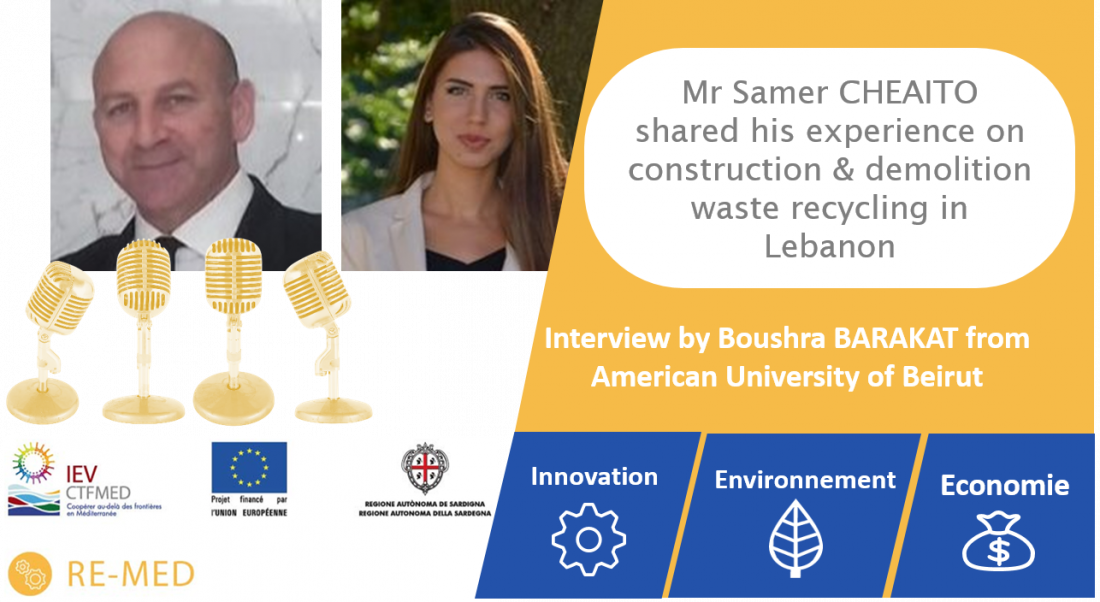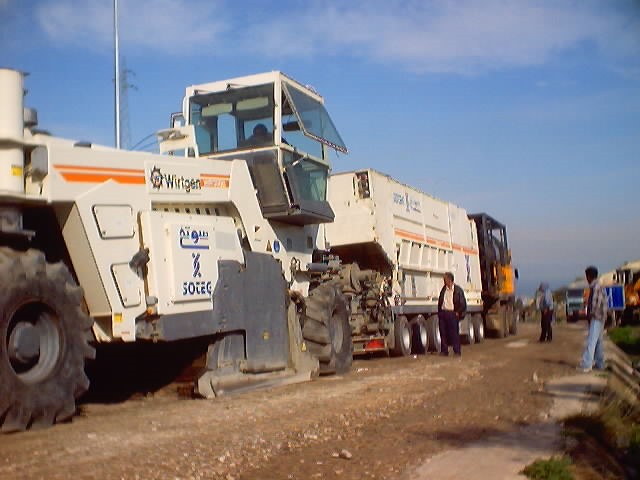RE-MED: Interview of a lebanese contraction company to share his experience on Construction & Demolition waste use in road

The American University of Beirut (AUB), in coordination with the Lebanese Contractors Syndicate of Public Works and Buildings (SLETP), Lebanese partner of RE-MED project, held a semi-structured virtual interview with Mr. Samer Cheaito, a Project Manager at Abniah s.a.r.l, a Lebanese Engineering and Contracting company specialized in buildings construction. Abniah is one of the leading Lebanese contracting companies classified as a first category contracting company.
The interview aimed to gain pragmatic insights for the purpose of assessing the Lebanese local socio-economic context in regard to construction and demolition waste (C&DW) management. The discussion covered topics related to on-site waste management, waste transportation and disposal, waste economics, and challenges faced by contractors pertaining to waste management. Project Manager Samer Cheaito described the status quo of on-site waste management from his experience. He explained the opportunities through which some of the waste materials generated could be reused on site leading to less waste disposed and cost savings by replacing other raw materials. In terms of on-site waste sorting, he explained the challenges imposed by this latter in terms of the additional labor force required, as well as its significant impacts on the project’s time and budget. Mr. Cheaito stressed on the importance of education and awareness relating to C&DW management, as it is considered as a foundation for any efforts aiming to enhance waste recycling and diversion in the country.
Finally Mr. Cheaito shared his experience on a notable asphalt recycling project where the “Cold Recycling Method” was adopted for the rehabilitation of Tabarja – Chekka Highway in 2002: “This method is a rehabilitation technique in which the existing pavement materials (mainly asphalt top layers, 1st base course layer, and any other material such as concrete toppings) are reused in place, then topped with a new asphalt layer without having to implement the conventional excavation and carting away to allocated dump areas any of said material. This technique led to save substantial financial losses, time and most importantly to overcome the hazardous environmental issues.”.

Fig. 1. A photo shared by Mr. Cheaito showing the “Cold Recycling Method” adopted for the rehabilitation of Tabarja – Chekka Highway 2002









